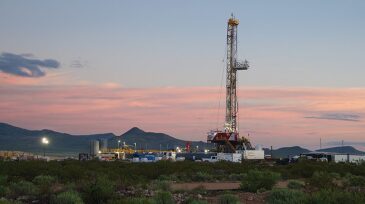Permian Basin
-
This week the US Geological Survey (USGS) reported that the Wolfcamp shale holds 20 billion bbl of technically recoverable oil. This builds on other active formations in the Permian Basin, where nearly half of US active rigs are operating.
-
Use of a complex-nanofluids (CNF) additive to hydraulic fracturing fluids has doubled even as activity has fallen because of potential production increases.
-
A look at a water management plan for developing shale assets in the Permian Basin encompassing the full life cycle of each field.
-
The US rig count has inched up recently, and the driver has been the old reliable of onshore oil production, the Permian Basin. With surging production, the Permian is the only major US oil shale play to grow since crude prices began to fall.
-
This paper analyzes differing well-factory approaches to unconventional assets, with examples from the Wolfcamp unconventional oil play in the Permian Basin.
-
A refracturing campaign in the Permian yielded a production gain that allowed payback on the investment within 6–12 months.
-
The integration of microseismic data with 3D seismic attributes, and well log and completions data is used to understand geomechanical rock properties.
-
This paper details the experience of using new stabilized crosslinked-fracturing-fluid systems in the Permian Basin using borated produced water.
-
Low oil prices look like something the industry needs to get used to. “This will be with us for a while,” said Rex Tillerson
-
For the past quarter of a century, underbalanced drilling (UBD) has been a niche technology known to many and practiced by few. It has seen acceptance in the North Sea, where UBD is used to drill through depleted reservoirs.










